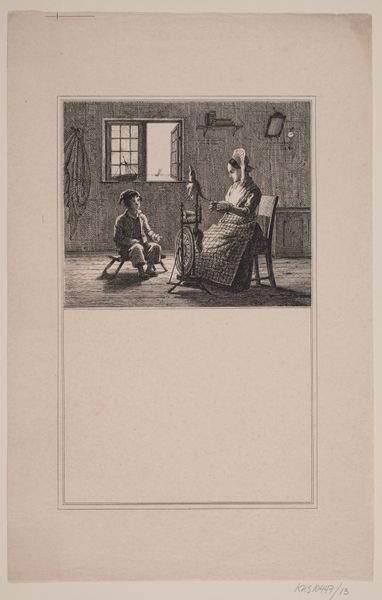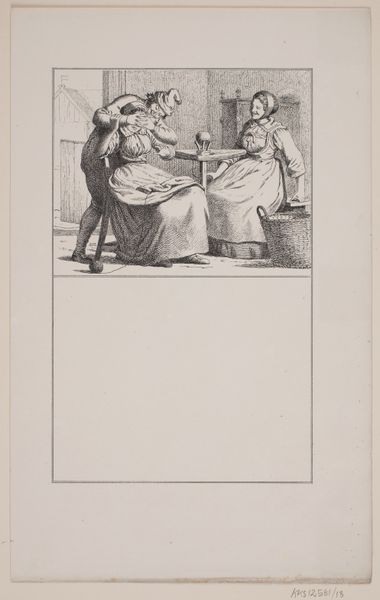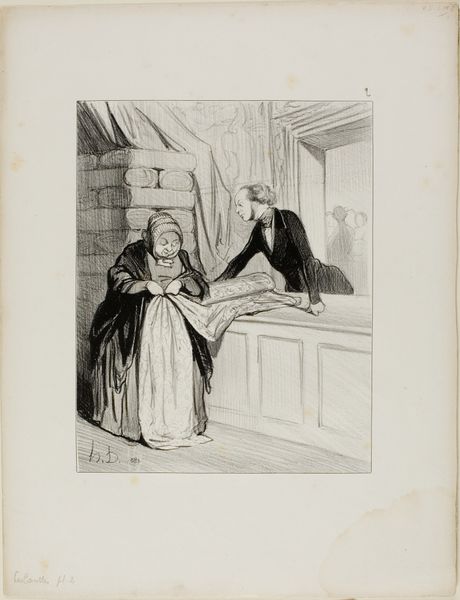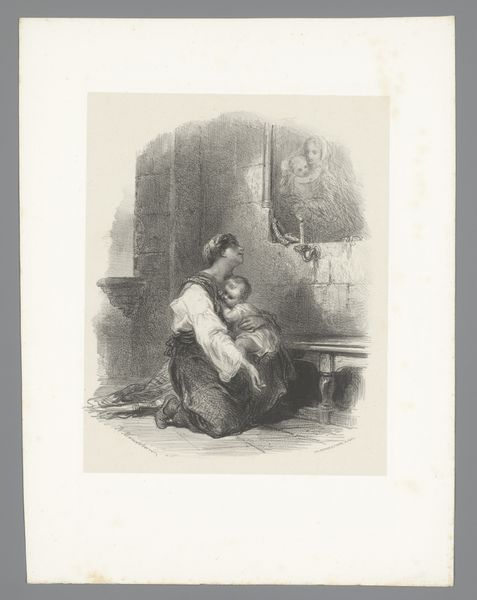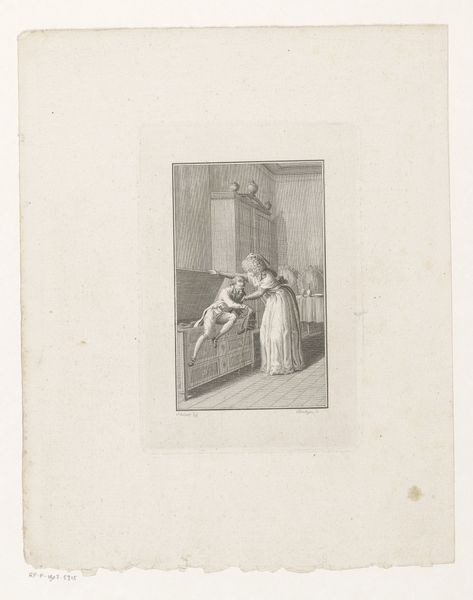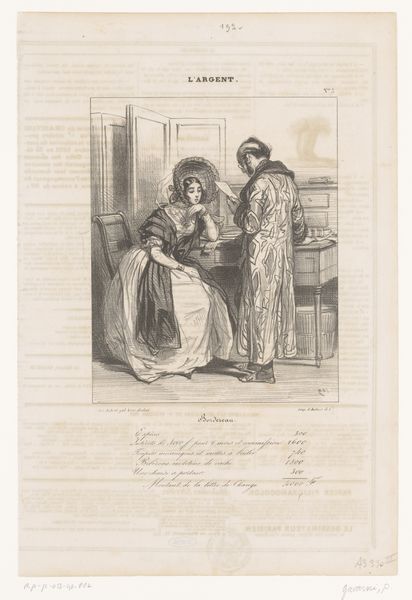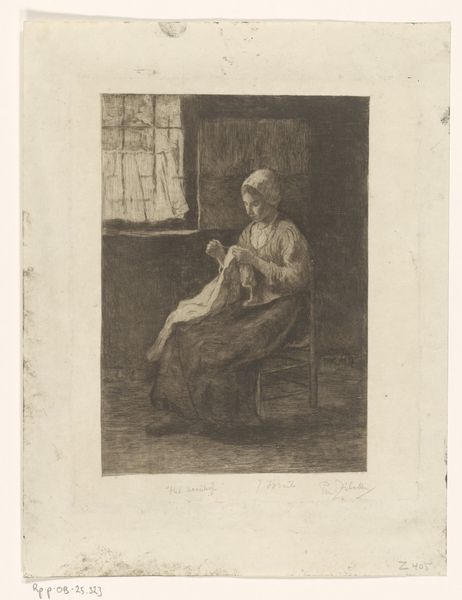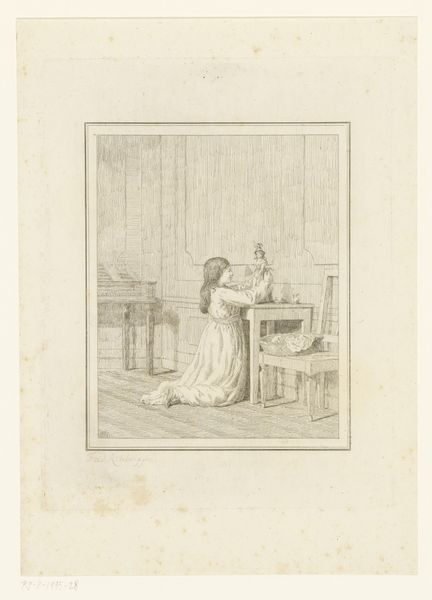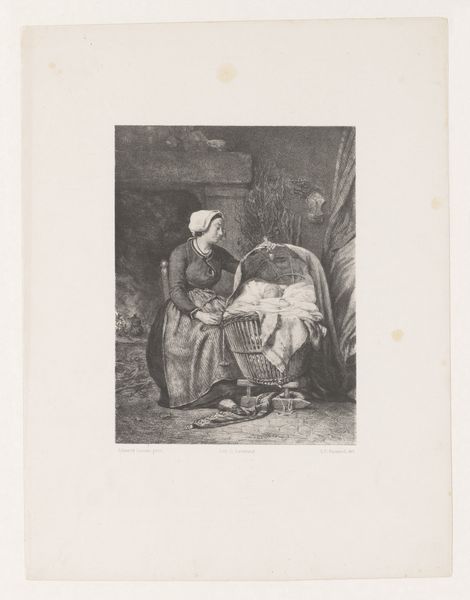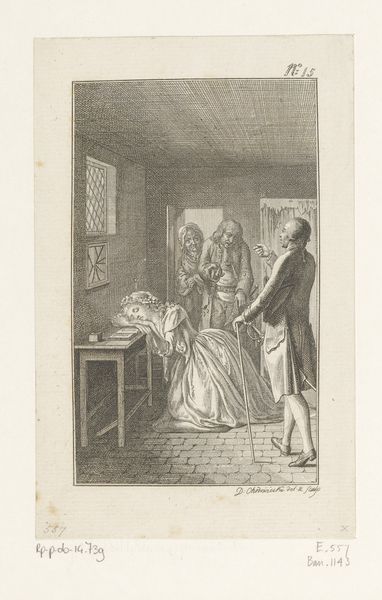
En fattig familie. Prøvetryk til Chr. Winther og M. Rørbye, "25 Billeder for små børn" 1846
0:00
0:00
drawing, lithograph, print, paper
#
portrait
#
drawing
#
lithograph
# print
#
paper
#
genre-painting
#
history-painting
#
realism
Dimensions: 270 mm (height) x 175 mm (width) (brutto)
Curator: Here we have Adolph Kittendorff's "En fattig familie. Prøvetryk til Chr. Winther og M. Rørbye, \"25 Billeder for små børn\"", a lithograph from 1846. Editor: It strikes me immediately as incredibly somber, the sharp contrasts created by the lithographic process intensifying the bleak atmosphere. The heavy lines give everything a palpable weight. Curator: Precisely. The composition is carefully structured to emphasize this. Notice the placement of figures: the kneeling child, the seated mother cradling a baby, and the looming figure in the doorway, each layered to build a narrative within the spatial constraints of the print. Editor: The material roughness of the printmaking process feels deliberate here. You can almost feel the grain of the lithographic stone—it underscores the gritty realism of the scene, the starkness of their poverty. This was intended as one of 25 images for children. I can't imagine what a child might take away from such dire subject matter. Curator: It speaks to the era's pedagogical approaches, doesn't it? There's an emphasis on conveying moral lessons. The family’s hardship functions, perhaps, as a caution or an appeal to charity, rendered in the visual language of realism, popular at that time. It represents contemporary understandings of social realities in stark, unsentimental terms. Editor: The image becomes a material testament to class divides and social inequality during the mid-19th century. Lithography, as a printmaking technique, democratized image production. But here we see it portraying those disenfranchised from those means, dependent upon others, reduced to almost symbolic figures of wretchedness. Curator: Indeed, it uses this "democratic" process to showcase a family burdened by a narrative that invites scrutiny of its artistic intention and broader social messaging. The artist may mean well but in its way this lithograph reveals just how stark life was for many during that era. Editor: And makes us question our consumption of such imagery, even today. Curator: A compelling example of artistic narrative and a profound reminder of enduring societal concerns. Editor: Food for thought and, potentially, a call for continued critical reflection.
Comments
No comments
Be the first to comment and join the conversation on the ultimate creative platform.
